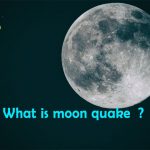Who is the “Human Lightning Conductor” ?

“They say all marriages are made in heaven, but so are thunder and lightning.” This is the words by veteran actor Clint Eastwood. We all are familiar with the beauty and fierceness of thunder and lightning. But do we know how it is formed ? What are the secrets behind the thunder and lightning. What is the total energy power generated in an average lightning ?
Lightning is the most spectacular element of a thunderstorm. In fact it is how thunderstorms got their name. Its Simple… lightning causes thunder. Lightning is a discharge of electricity. A single stroke of lightning can heat the air around it to 30,000°C (54,000°F) ! This extreme heating causes the air to expand explosively fast. The expansion creates a shock wave that turns into a booming sound wave, known as thunder.
How it formed ?
Ice crystals high within a thunderstorm cloud flow up and down in the turbulent air, they crash into each other. Small negatively charged particles called electrons are knocked off some ice and added to other ice as they crash past each other. This separates the positive (+) and negative (-) charges of the cloud. The top of the cloud becomes positively charged while the base of the cloud becomes negatively charged.
Formation of Lightning Bolt
Because opposites attract, the negative charge at the bottom of the storm cloud wants to link up with the ground’s positive charge. Once the negative charge at the bottom of the cloud gets large enough, a flow of negative charge called a stepped leader rushes toward the Earth. The positive charges at the ground are attracted to the stepped leader, so positive charge flows upward from the ground. When the stepped leader and the positive charge meet, a strong electric current carries positive charge up into the cloud. This electric current is known as the return stroke. We see it as the bright flash of a lightning bolt.
Lightning is a naturally occurring electrostatic discharge during which two electrically charged regions in the atmosphere or ground temporarily equalize themselves, causing the instantaneous release of as much as one gigajoule of energy. This discharge may produce a wide range of electromagnetic radiation, from very hot plasma created by the rapid movement of electrons to brilliant flashes of visible light in the form of black-body radiation.
Lightning causes thunder, a sound from the shock wave which develops as gases in the vicinity of the discharge experience a sudden increase in pressure. Lightning occurs commonly during thunderstorms and other types of energetic weather systems, but volcanic lightning can also occur during volcanic eruptions.Thunder and lightning occur at roughly the same time although you see the flash of lightning before you hear the thunder. This is because light travels much faster than sound. Worldwide there are around 16 million thunderstorms each year. They are most frequent in tropical rainforests where they can be almost daily occurrences.
Striking facts about lightning & Thunder
Intense heat from lightning causes the surrounding air to rapidly expand and create a sonic wave that you hear as thunder.
The speed of sound is around 767 miles per hour (1,230 kilometres per hour).
The speed of light is around 669600000 miles per hour (1080000000 kilometres per hour).
Thunder is difficult to hear at distances over 12 miles (20 kilometres).
In UK there is around a one in three million chance of being struck by lightning. Which are bigger odds than winning the Lottery !
Lightning can occur inside clouds, between clouds and from clouds to the ground.
Most lightning occurs over land rather than oceans, with around 70% of it occurring in the Tropics.
Lightning is usually produced by cumulonimbus clouds that are very tall and dense.
One cumulus cloud can weigh more than 1 million pounds. When it comes to a billowing thunderstorm, though, the weight can go up tremendously depending on how much rain it’s holding.
United States park ranger Roy Cleveland Sullivan was hit by lightning 7 times. He was first struck in 1942 at age 30 and the last time in 1977 at age 65. He survived all 7 strikes, earning him the nicknames “Human Lightning Conductor” and “Human Lightning Rod”.
The average thunderstorm is 15 miles wide and lasts around 30 minutes.
Lightning kills an average of 26 people a year in the U.S. (2010 to 2019 data) and injures hundreds more. Some survivors suffer lifelong neurological damage.
Other planets in our solar system also have lightning, including gas giants Jupiter and Saturn. There are also bright flashes in dust storms on Mars, which some scientists believe to be evidence of lightning.
The irrational fear of lightning is known as keraunophobia.
Most lightning strikes average at 2-3 miles long and carry a current of 10000 Amps at 100million volts.
An average lightning bolt can release enough energy (around 250 kilowatt-hours) to operate a 100-watt light bulb for more than three months straight.
The average thickness of a bolt is around 1-2 inches.
The strike happens in under 2 microseconds (that’s 0.000002 seconds).
Lightning strikes are over 50,000 degrees! That’s more than 5 times the temperature of the sun.
Small creatures such as fish and frogs can be sucked up within the strong updrafts of a thunderstorm and carried along before falling back to earth. In 1984 six-inch long fish fell on a London neighbourhood – some were still alive.
















